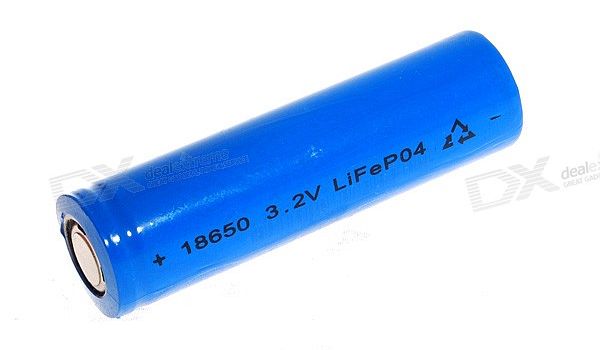Inside Li-ion batteries, phase transitions occur that crack the electrodes. Under fast (dis)charging, however, these phase transitions do not occur, wrote Dr. Marnix Wagemaker and colleagues in Nature Communications on September 23, 2015. Counterintuitively perhaps, fast charging prolongs the lifetime of batteries.
LiFePO4 batteries are quite common (Photo: DXDCN)
Rechargeable Li-ion batteries are the backbone of today’s portable electronics such as smartphones, tablets and laptops. And they are the driving force behind the electrification of transport. The working principle is based on the reversible insertion and extraction of mobile Lithium ions in the crystal structure of the positive and negative electrode materials, resulting in highly efficient and high-density energy storage. However, phase transitions of electrode materials (that coincide with the absorption or release of Li-ions) can cause volume changes that crack the electrode material and lead to poor performance and degradation of the battery.

In a unique experiment, which took place at the European Synchrotron Radiation Facility in Grenoble, Dr. Marnix Wagemaker and colleagues have studied crystal changes in a common Li-ion battery (LiFePO4) while charging and discharging. In other words, they witnessed the structural changes when Li-ions were flowing in and out of the Iron Phosphate electrode.
The micron-sized and bright X-ray beam at the Synchrotron Facility allowed the researchers to focus on single nano-sized LiFePO4 grains. In all, the researchers studied about 150 of these grains during (dis)charging. As they varied the charging time from half an hour (fast) to over two days (slow), they saw phase changes taking place in the electrode grains. The tiny grains were monitored with a technique called X-ray powder diffraction, in which the angle of dispersion of the X-ray beam gives the researchers information on the distances between atoms in a crystal.
Under slow charging, the researchers saw multiple phase changes occurring like sandwiches of Li-rich and Li-poor electrode material. When increasing the charge rate, these sandwich structures disappeared, and the transition between Li-rich and Li-poor became diffuse.
Wagemaker and his team conclude that high (dis)charge rates by applying over-potential prevent the build-up of local strain in the crystals at sharp phase boundaries. ‘This is expected to prevent the formation of cracks at high (discharge) rates, counterintuitively predicting that the LiFePO4 material should show a longer cycle lifetime when cycled at higher rates’, they wrote. They hope their findings will serve as guidelines for future battery design.
- Xiaoyu Zang, Martijn van Hulzen et. Al. & Marnix Wagemaker, Direct View on the phase evolution in individual LiFePO4 nanoparticles during Li-ion battery cycling, Nature Communications, September 23, 2015, doi: 10.1038/ncomms9333
Do you have a question or comment about this article?
j.w.wassink@tudelft.nl


Comments are closed.